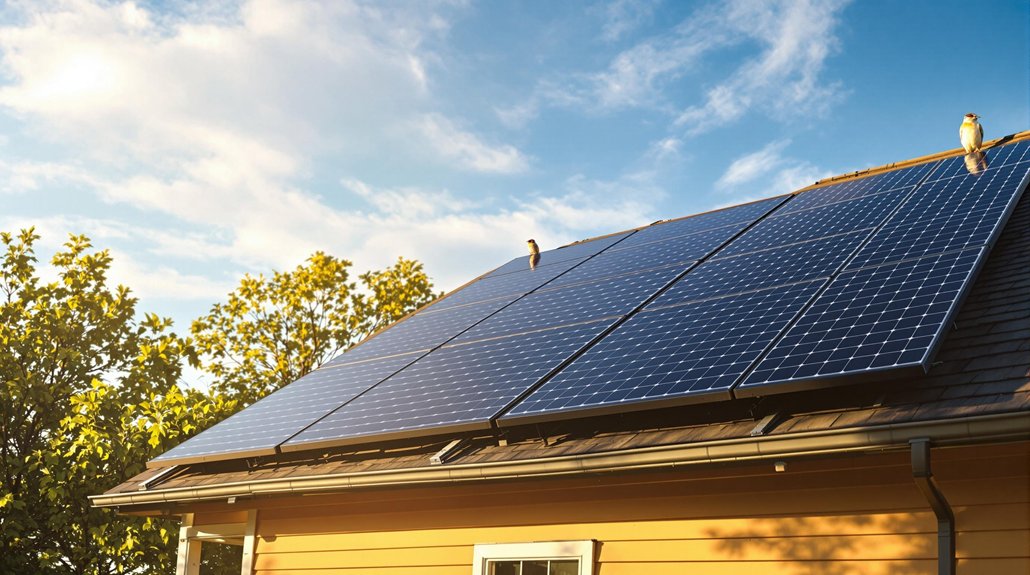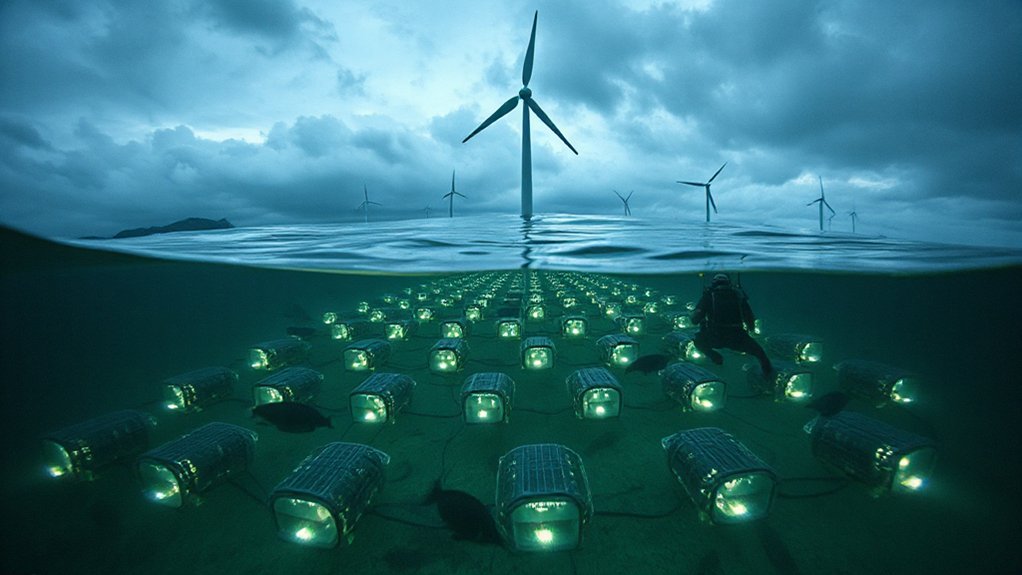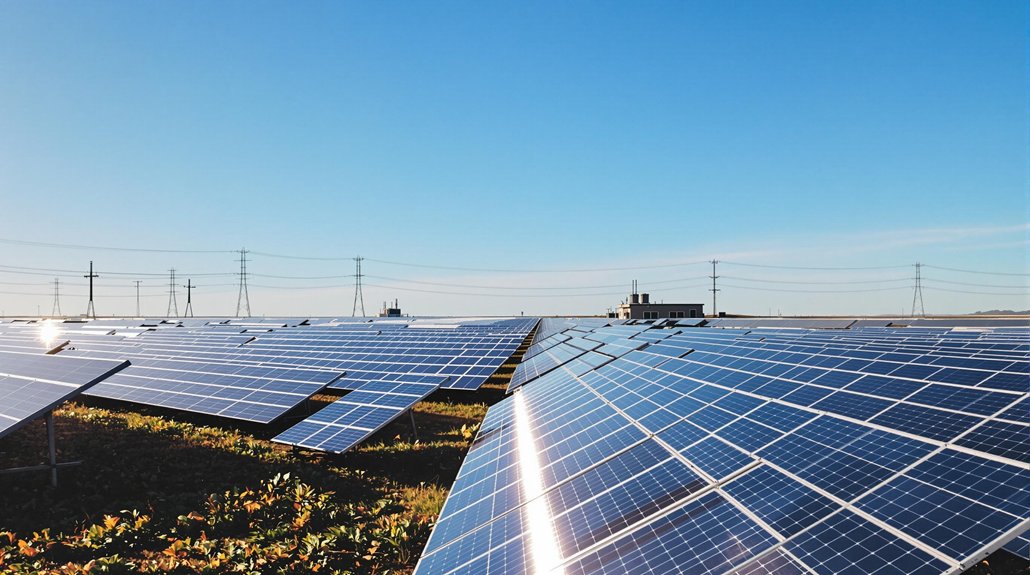Solar panels benefit both homes and the environment. They convert sunlight into electricity without producing carbon emissions, reducing dependence on fossil fuels. Homeowners can save 20-100% on electricity bills while increasing property values. Systems typically last 25-30 years with minimal maintenance. With federal tax credits and potential income from selling excess power, installations often pay for themselves within 8 years. The advantages extend beyond financial savings.

Homeowners across the country are turning to solar panels as a way to power their lives while helping the environment. Solar energy systems capture sunlight and convert it into electricity without producing carbon emissions or greenhouse gases. This clean energy alternative decreases reliance on fossil fuels and helps combat climate change by minimizing air and water pollution associated with traditional energy production.
The financial benefits of solar panels are significant. Households can reduce their monthly electricity bills by 20 to 100 percent depending on their system size and energy usage. Solar installations typically increase home values by around $15,000 on average. The federal government currently offers a 30 percent tax credit on installation costs. Many homeowners also benefit from net metering programs that allow them to sell excess electricity back to the grid.
Installing solar panels isn’t just environmentally responsible—it’s financially smart with reduced bills, increased home value, and generous tax incentives.
Solar panels provide energy independence. With home solar systems, residents generate their own electricity and become less vulnerable to rising energy costs. When paired with battery storage, solar panels can provide reliable power during outages. This self-sufficiency benefits individual homeowners and contributes to national energy security. Installing solar panels also helps conserve energy resources for future generations.
These systems require very little maintenance. With no moving parts, solar panels typically last 25 to 30 years with manufacturer warranties. They need only occasional cleaning to maintain peak performance and operate silently without disrupting daily life. The average homeowner can expect to see a positive return on their solar investment in about 8 years.
Technological advances continue to improve solar energy systems. Modern panels integrate with smart home systems, offer real-time monitoring through mobile apps, and come in aesthetically pleasing designs like solar roof tiles. They can even power electric vehicle charging stations for fully sustainable transportation.
Solar energy creates local jobs in installation and maintenance while reducing strain on community power grids. It improves local air quality and educates neighborhoods about renewable energy benefits. Solar adoption helps support economic diversification in communities by attracting new businesses focused on green technology. As the world shifts toward sustainable energy sources, solar panels help homeowners prepare for future energy regulations while positioning them as environmental stewards for generations to come.
Frequently Asked Questions
How Long Do Solar Panels Typically Last?
Solar panels typically last 25-30 years, though many continue producing electricity well beyond this timeframe.
Premium models can function for 40-50 years.
Panels don’t suddenly fail but gradually lose efficiency, with degradation rates of 0.5-0.8% annually.
Most retain 80-90% of their original efficiency after 25 years.
Manufacturers generally offer 25-year warranties, with premium brands extending coverage to 30-40 years.
Can Solar Panels Be Installed on All Roof Types?
Solar panels can be installed on most, but not all roof types. Asphalt shingles and metal roofs are ideal candidates.
Tile roofs require special mounting systems. Flat roofs need tilted racks for maximum sunlight.
Some materials like wood, slate, and asbestos present challenges. Roof age, condition, orientation, and shade also affect installation feasibility.
Homeowners should confirm their roof has at least 10 years of life remaining.
Do Solar Panels Work During Cloudy or Rainy Days?
Yes, solar panels work during cloudy or rainy days, but with reduced output.
On overcast days, panels generate 10-25% of their normal electricity. Partially cloudy conditions can yield 50-80% efficiency.
Rain actually helps by cleaning dust off panels, improving their long-term performance. While heavy clouds limit energy production, diffuse light still reaches the panels.
High-efficiency models perform better in these low-light conditions than standard panels.
What Maintenance Do Solar Panels Require?
Solar panels require regular cleaning every 6-12 months using mild soap and water. This improves efficiency by 3-5%.
Monthly visual checks help spot damage, while quarterly inspections can identify loose connections.
Professionals should inspect systems annually, and inverters typically need replacement after 10-15 years.
Environmental maintenance includes removing snow, clearing debris after storms, and trimming nearby trees to prevent shading.
How Much Roof Space Is Needed for Effective Solar Installation?
An effective solar installation typically requires 200-1000 square feet of roof space.
The exact amount depends on a home’s energy needs and local conditions. A standard 20-panel system needs about 300 square feet.
Roof orientation matters too – south-facing roofs at a 30° angle work best.
Homeowners should verify their roof can support the weight of panels, which add 2.3-2.4 pounds per square foot.









